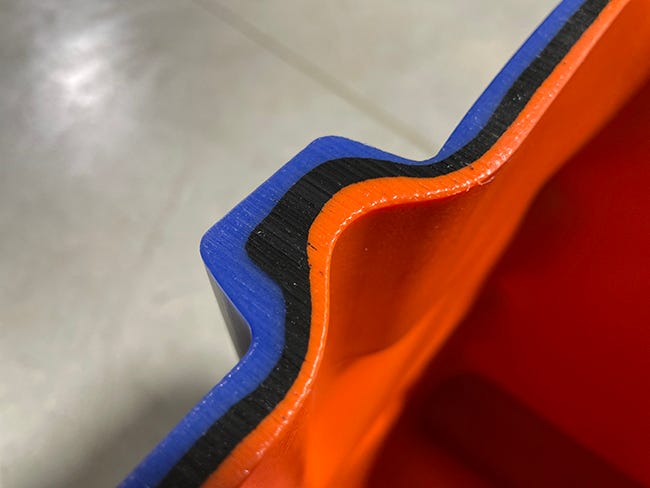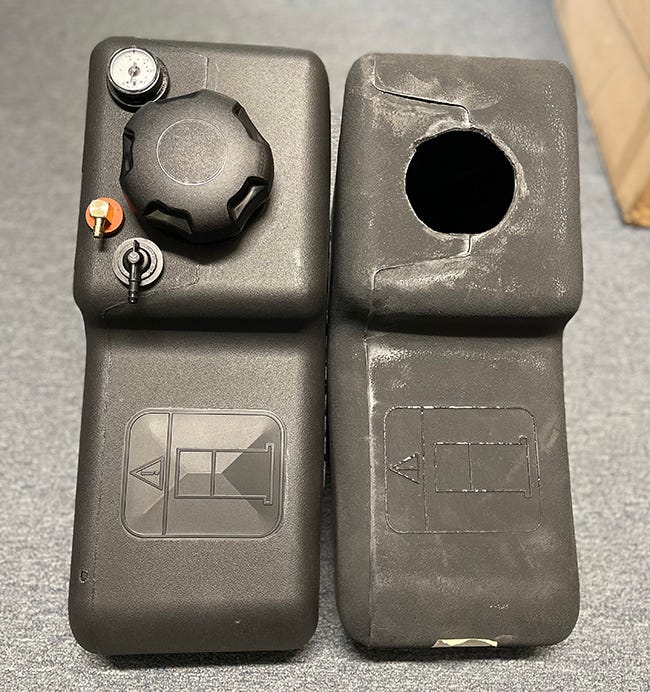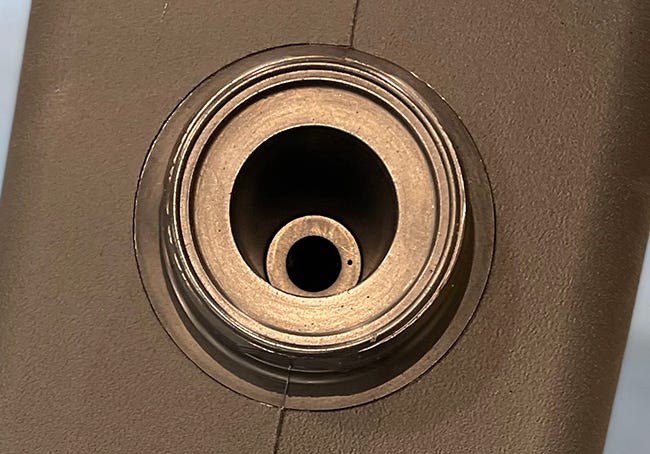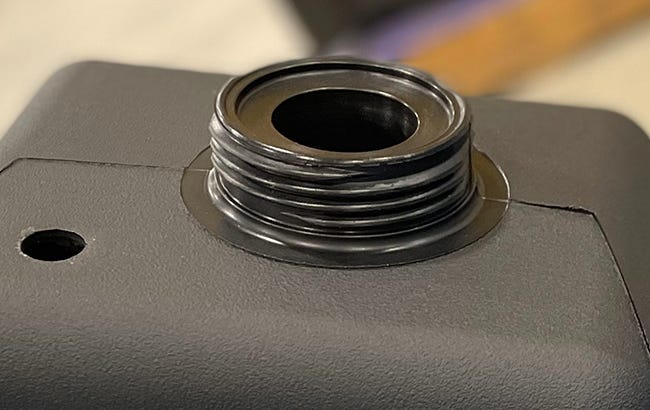Robotic Rotational Molding Drives New Precision in Plastics Molding
The technology offers consistent part-to-part repeatability, optimized strength-to-weight ratios, and wide-ranging design flexibility.
July 19, 2023

Kevin Lumberg
The worlds of baking and plastics molding may seem miles apart on the surface, but in reality, they actually have a lot in common. In both, we strive for perfection — consistently creating a perfect finished product.
While we may consider baking to be more of an art and plastics molding to be more science-based, the fact is that both boil down to using the right ingredients, applying the right temperature at the right time, and using the right baking tool, be it a pan or a mold.
We may part ways, however, when it comes to technology. While a master baker may refuse to inject modern technology into their process, in plastics molding, we embrace it. Case in point — the use of robotic rotational molding, which is driving more precision into the plastics molding process and creating new standards in perfection.
Robotic rotational molding is a leading-edge technology that delivers tighter tolerances, which can be held with precision-distributed heat and material control. This technology offers consistent part-to-part repeatability, optimized strength-to-weight ratios, and unsurpassed design flexibility, which includes the ability to layer different compounds and coatings into finished parts (image 1).
|
Image 1: Robotic rotational molding allows for the creation of multiple layers in one wall. |
A fully automated process, the robotic rotational technology we have developed at Gemstar Manufacturing is ideal for meeting unique product geometries, achieving tight tolerances, and utilizing highly engineered resins with unique requirements. It also is helpful in producing lighter specialty components, meeting reinforced mechanical properties, and utilizing materials difficult for traditional molding methods.
It starts with the ingredients
Any skilled baker knows that the ingredients you use will affect the outcome of the final product. That’s also the case in plastics molding. However, with the introduction of robotic rotational molding technology, manufacturers have more options to consider. The pinpoint precision of robotic rotational molding technology allows manufacturers to combine different materials to produce higher quality products.
There are many types of resins — including polyethylene, nylon, and polypropylene — and within these, there are many subcategories, such as linear-low-density, high-density, and even cross-linked polyethylene.
It’s easy to fall into the trap of thinking, “We have a resin in stock, so we can just use that one.” Each type and grade of resin has its strengths and weaknesses, which can affect the final product.
While different types of ingredients may work just fine with traditional molding methods, there are some materials and combinations of materials that work extremely well with robotic rotational molding technology. With this technology, manufacturers can obtain a more perfect product, wasting less material while increasing consistency.
For example, robotic rotational molding optimizes many of the innovative materials on the market, including thermoplastic acetal copolymer and thermoplastic polyester elastomer. In image 2, the tank on the right-hand side is made from nylon using conventional rotational molding; the tank on the left is made out of a thermoplastic acetal copolymer, optimized by robotic rotational molding.
|
Image 2: A tank made from a thermoplastic acetal copolymer, optimized by robotic rotational molding, is shown on the left. On the right is a tank made from nylon using a conventional rotational molding process. |
Temperature — science or art?
Master bakers care deeply about temperature. That’s part of the art of baking.
With traditional methods of molding, controlling the temperature in the manufacturing process also is an art. But with robotic rotational molding, it’s now an exact science that is fully automated.
Temperature can and will affect the formation of a high-quality formed part with all of the possible resins, and that effect can happen throughout the entire processing window from heating through cooling. Problems that can arise from improper temperature settings include bubbles, uneven wall thickness, discoloration, low impact strength, stiffness, warping, shrinkage, deforming, and demolding.
Robotic rotational molding technology eliminates those problems by applying precision temperature control to the right combination of ingredients. The mold (or tool) is heated directly with heating wires that are designed based on the part being created. These heating wires are built into the mold and run throughout it, creating multiple heating zones. Each zone can be controlled independently to have different heat levels, determining how much resin is melted on that specific part of the mold. Since the heat is electronically controlled through a thermostat, we can heat to very specific temperatures and achieve optimal results.
The blend of high-quality material and precision heating allows for better formation of unique geometries, including varying wall thicknesses (image 3) and improved threading (image 4).
|
Image 3: The ability to vary wall thicknesses within a form allows for unique geometries such as internal funnels. |
|
Image 4: Precision heating allows for more definition in threaded shapes. |
So, how do you deal with temperature? First, resin manufacturers should be able to give you a suggested “recipe,” or provide guidance on how to heat and then cool the resin while forming the part. With conventional rotational molding, you can monitor the entire cycle with a data logger — observing the temperature throughout the heating and cooling process and adjusting accordingly. Just because your roto machine says it is at a set temperature does not mean that it is correct. You need to always verify with the data logger. If you are not accurate with your temperature, you will not be able to mold the highest quality finished part.
During changes in weather and different seasons, maintaining temperatures throughout the heating and cooling process can be especially difficult because of fluctuations in the ambient temperature. To create more stability, the robotic rotational technology constantly tracks and adjusts the temperature during molding to maintain the programmed recipe throughout the process. It achieves this by maintaining many heating zones throughout the tool. Some specialized resins can have very narrow processing windows, and if your temperatures are not maintained accurately, you will not get high-quality finished parts.
Bottom line
While there are many efficient, proven techniques to manufacture plastic parts and products, there is now another manufacturing option that plastics engineers should consider for achieving a more perfect product. Robotic rotational molding technology increases efficiencies, lowers scrap rates, improves quality, and reduces cycle times by as much as 35%, while offering designers a new solution to meet tomorrow’s manufacturing challenges.
About the author
Kevin Lumberg is the Channel Manager for Gemstar Custom Part Solutions, the custom molded parts division of Gemstar Manufacturing based in Cannon Falls, MN. The company has developed Robomold robotic rotational molding technology.
You May Also Like






